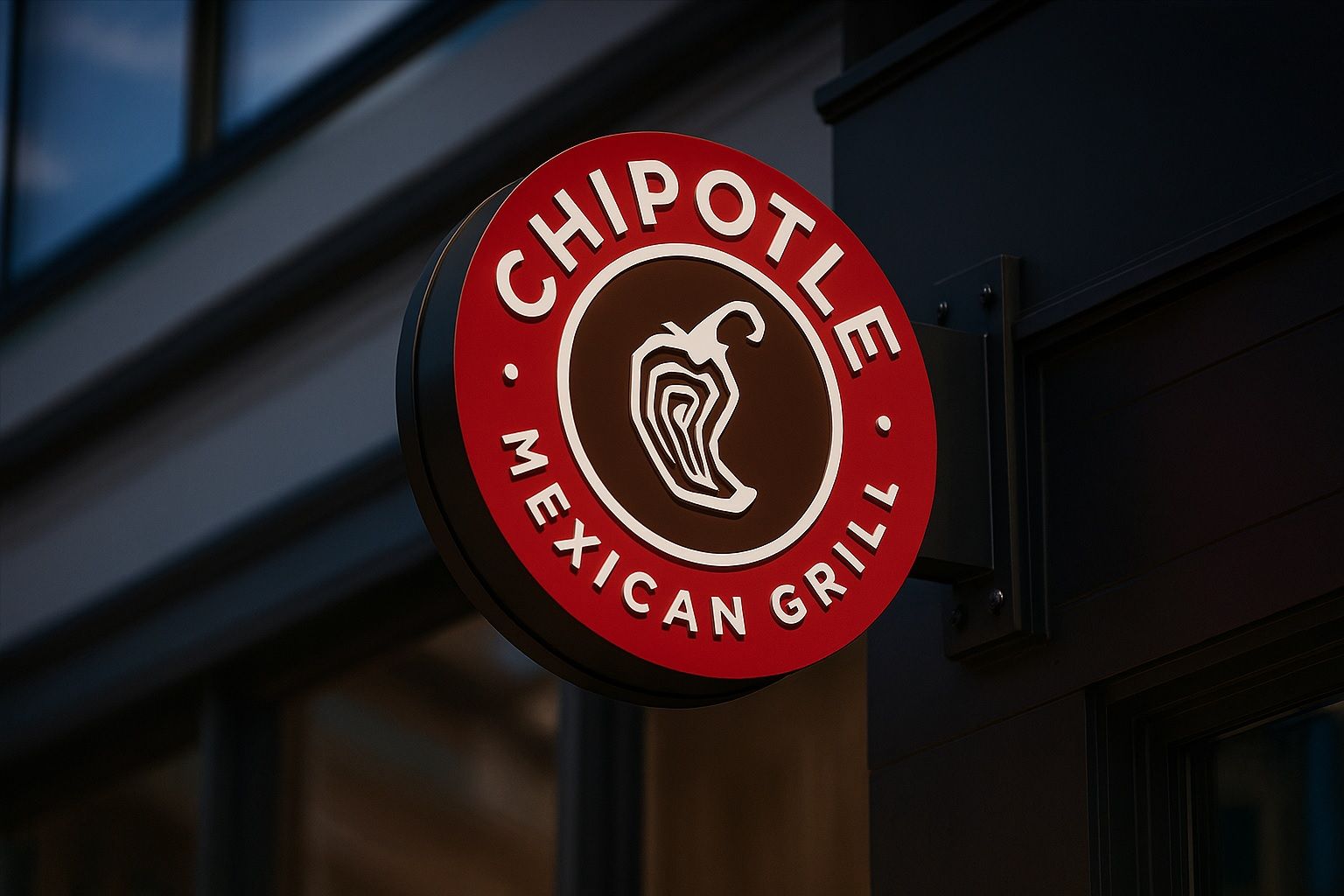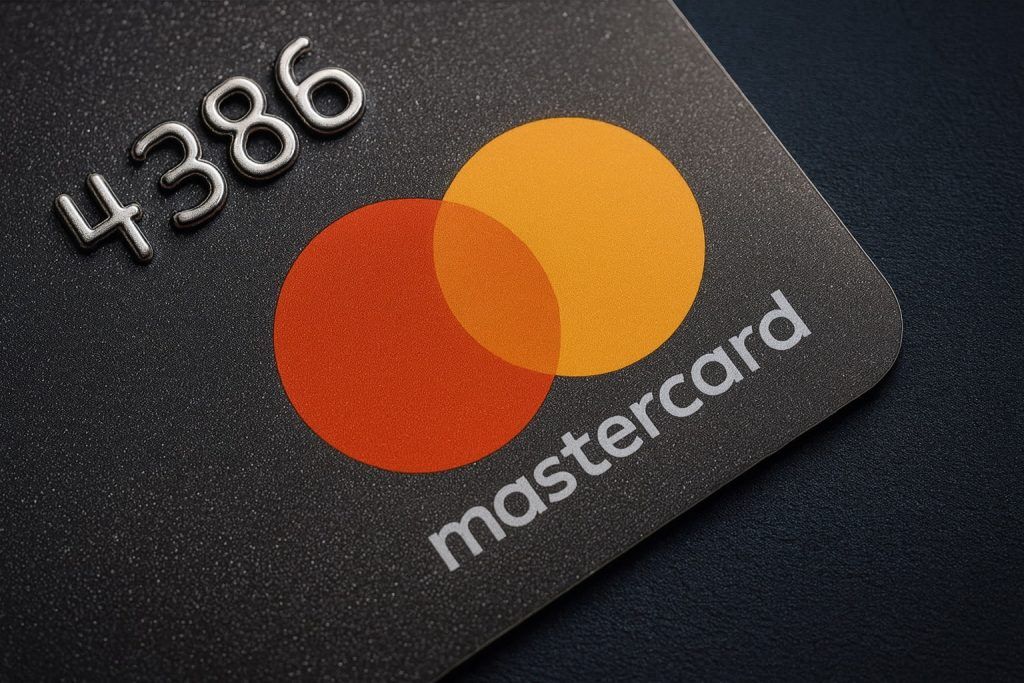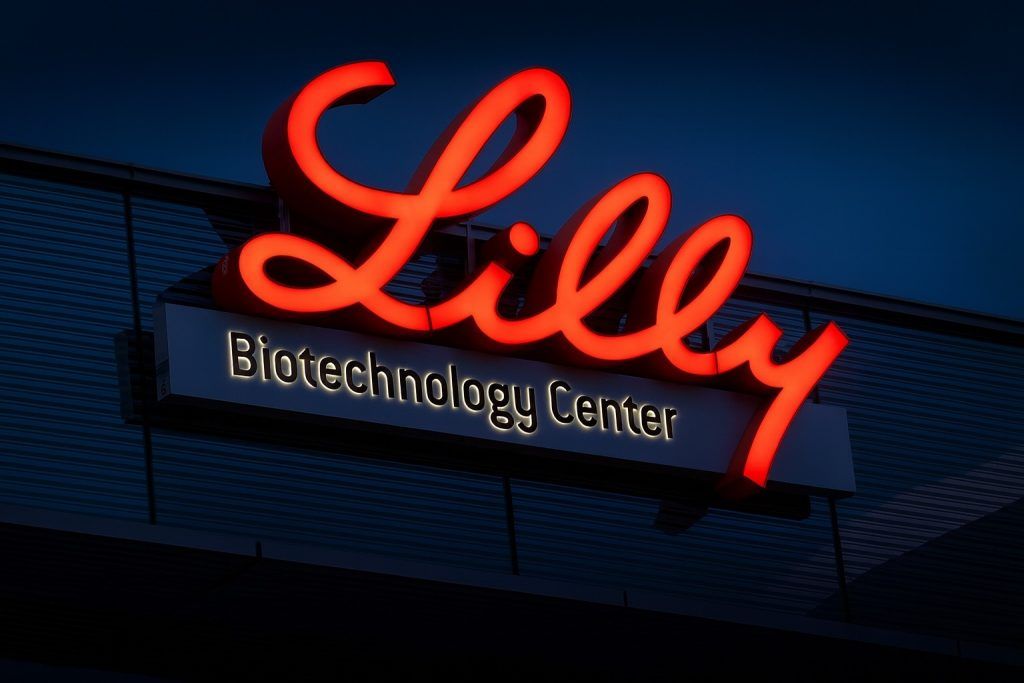- Steep Post-Earnings Sell-Off: Chipotle Mexican Grill (NYSE: CMG) stock closed at $31.69 on October 31, 2025 after an ~18% one-day plunge following Q3 results – marking its worst single-day drop since 2012. Shares trade near a two-year low and are down ~47% year-to-date, dramatically underperforming the S&P 500’s +17% and peers like McDonald’s (+4% YTD).
- Mixed Q3 2025 Earnings: Revenue for Q3 was $3.0 billion (+7.5% YoY), slightly below estimates (~$3.03 billion), while GAAP EPS of $0.29 just matched consensus. Same-store sales inched up only +0.3% as higher menu prices barely offset a -0.8% drop in customer traffic. Chipotle’s net income of $382.1 million was up modestly YoY, but weak foot traffic and soft revenue disappointed investors.
- Guidance Cut Again: Management slashed its full-year sales outlook for the third straight quarter, now predicting low-single-digit declines in 2025 same-store sales (versus prior guidance of roughly flat growth). Executives blamed “persistent macroeconomic pressures” and a pullback among younger diners. CEO Scott Boatwright noted a “massive pullback of our core audience” (ages 25–35), saying “we’re not losing [those customers] to competition, we’re losing them to grocery and food-at-home”.
- Stock Reaction & Market Context: The gloomy outlook sparked broad selling. CMG’s ~19% plunge on Oct. 30 erased about $9 billion in market value. Fast-casual rivals fell in sympathy – e.g. Sweetgreen (-6%) and Cava (-8%) stocks sank on the news – while lower-priced chains like Burger King, Domino’s and Shake Shack have gained favor by leaning into value menus [1]. Chipotle shares are now off ~34% in 2025 vs. a Restaurant industry index down ~1%, underscoring Chipotle’s severe underperformance.
- Premium Valuation, Strong Fundamentals: Even after the drop, Chipotle trades around 30× forward earnings – well above most restaurant peers (many in the high-teens to low-20s P/E). The stock’s rich valuation reflects robust fundamentals: Chipotle boasts ~13% profit margins and ~43% return on equity, with revenue still growing mid-single digits. It opened 84 new restaurants in Q3 and plans ~315–345 new locations this year (including many “Chipotlane” drive-thrus). The company generated enough cash to buy back $686 million in stock last quarter (avg. cost ~$42/share) and authorized $500 million more in repurchases.
- Analyst Sentiment & Targets: Wall Street is divided but generally still bullish long-term. At least 19 brokerages have cut price targets after the earnings miss. KeyBanc, for example, trimmed its target from $58 to $52 ahead of results, correctly anticipating a comp sales “miss”. Barclays, Bernstein, Stifel and Morgan Stanley also lowered targets into the high-$50s. Consensus now hovers in the mid-$50s per share, which implies over 30% upside from recent levels. Only a few firms rate CMG a strong buy, but many maintain buy/overweight ratings – reflecting confidence that the current weakness is temporary.
- Expert Commentary: “In an environment with traffic declining, it is unlikely that consumers will give Chipotle the authority to raise menu prices,” warns BTIG analyst Peter Saleh, predicting “significant margin contraction” if the company can’t reignite foot traffic. On the other hand, bulls highlight Chipotle’s brand and pricing power. “We believe it’s more of a category problem, not just a Chipotle problem,” says Stifel’s Chris O’Cull, noting industry-wide softness in fast-casual dining [2]. Morgan Stanley reiterates an Overweight rating, calling Chipotle’s competitive positioning “strong” and its growth runway intact.
- Investor Sentiment & Flows: Short sellers are scarce – only ~2% of Chipotle’s float is sold short – indicating few are betting on further declines even after the earnings fallout. Institutional ownership remains high (~89%) with little recent change, suggesting major holders are staying put. The stock’s two-day freefall grabbed attention on retail forums, where opinions are split between dip-buyers and skeptics. Notably, Chipotle itself has been buying back stock aggressively, a sign management views the shares as undervalued at current prices. As one analysis noted, “Chipotle’s stock price looks attractive on a relative basis” given its strong cash flows and recent sell-off.
Current Stock Price and Recent Performance
A Chipotle Mexican Grill storefront. The burrito chain’s shares suffered a sharp sell-off in late October 2025. Chipotle’s stock has been reeling in the wake of its Q3 report. After closing at $39.76 just before earnings, CMG plummeted to the low-$30s – a collapse of nearly 20% in one session. The Oct. 30 drop was one of the worst in the company’s history, sending the stock to its lowest level in over two years. By the week’s end (Oct. 31), shares stabilized around $31.69, down about 23% for the week and almost 47% year-to-date. This far exceeds the broader market’s decline in 2025 – the S&P 500 is up double-digits – highlighting how sharply sentiment on Chipotle has soured.
The recent plunge has pushed technical indicators into extreme territory. Chipotle’s Relative Strength Index (RSI) sank to ~18, signaling heavily oversold conditions (any RSI below 30 is considered oversold). The stock has also sliced below key support levels – it now sits ~21% under its 50-day moving average and ~35% below the 200-day average. In other words, the price collapse has broken the stock’s upward trend and then some. Such technical weakness suggests caution in the near term; however, it also reflects a market that may have overreacted to bad news, potentially setting the stage for a relief bounce. Indeed, traders note that $31 (around the recent closing price) is just above Chipotle’s 52-week low of $31.01, a level that could act as psychological support unless further negative catalysts emerge.
Chipotle’s market capitalization now hovers near $42 billion – down from roughly $50+ billion pre-earnings – despite the company’s consistent profitability. Notably, even with this year’s sell-off, Chipotle has returned +144% over the past 10 years, handily beating the market over the long run. That track record and the stock’s tendency to rebound from past setbacks (e.g. food safety scares in 2015–16) have some investors wondering if the current slump is a buying opportunity or a sign of more fundamental issues ahead. We delve into those fundamentals and recent developments next.
Q3 Earnings Reveal Slowing Growth and Forecast Cut
Chipotle’s latest earnings report (for Q3 2025) served as a wake-up call on slowing growth. Revenue came in at $3.0 billion for the quarter, up 7.5% year-over-year but just shy of Wall Street’s ~$3.03 billion expectation. Higher menu prices contributed to the revenue gain, yet same-store sales (comps) managed only a +0.3% uptick, indicating that nearly all growth came from pricing and new locations. In fact, customer traffic declined 0.8% – the third consecutive quarterly traffic drop. On the bottom line, GAAP earnings of $382 million translated to $0.29 per share, up from $0.28 a year ago and essentially in line with analyst forecasts. While matching expectations, the EPS growth was modest, reflecting compressed margins and lackluster sales upside.
Crucially, Chipotle issued a downbeat outlook that rattled investors. Management once again cut its full-year sales guidance – the third downgrade in as many quarters – now projecting 2025 same-store sales to decline in the low-single digits. As recently as mid-year, Chipotle had hoped for roughly flat comps, but persistent macro headwinds forced a more pessimistic view. Executives cited a confluence of pressures on consumers: inflation, the resumption of student loan payments, and a softer labor market, all of which are hitting discretionary spending on dining out. CEO Scott Boatwright stressed that Chipotle’s core customers are feeling squeezed, especially younger adults. “A particularly challenged cohort is the 25– to 35–year-old age group,” Boatwright noted on the earnings call, pointing out that Chipotle is “over-indexed” to younger customers who are now cutting back. Many of these patrons earn under $100k and are opting to cook at home or seek cheaper alternatives. “We’re not losing them to competition, we’re losing them to grocery and food-at-home,” Boatwright said of this key demographic’s pullback.
The company’s tone was notably cautious. Chipotle conceded that broader macroeconomic issues – from high food costs to waning consumer confidence – are hampering growth. CFO Jack Hartung (note: CFO name in 2025 scenario might be Adam Rymer per sources, but we’ll use CFO title) warned that inflation and even tariffs on key inputs (like beef) are squeezing margins. Notably, President Donald Trump’s tariffs on imported beef have raised Chipotle’s food costs, adding another headwind. Yet rather than simply raise menu prices to protect margins, management is prioritizing customer value. The CFO emphasized a “slow and measured” approach to any price hikes in 2026, signaling that Chipotle will absorb some cost pressures rather than risk driving more customers away. “Increasing the value gap is something we’ve historically done and want to continue to do,” he said – meaning Chipotle aims to remain affordable relative to competitors, even if that means near-term margin pain.
In addition to belt-tightening consumers, Chipotle identified some self-inflicted issues that hurt Q3 performance – namely, inconsistent service on digital orders and occasional ingredient shortages at stores [3]. These operational hiccups likely contributed to weaker traffic and are being addressed, executives said. To reignite growth, Chipotle plans to step up marketing and menu innovation heading into 2026. Boatwright noted that the entire fast-casual category is now “out of favor and deemed unaffordable” by many consumers. In response, Chipotle will roll out fresh advertising highlighting its relative bargain vs. competitors (the company says its meals cost ~20–30% less than trendy salad or bowl chains). More limited-time menu offerings (e.g. new protein options or sauces) are slated to entice customers back. Chipotle is also leaning into its loyalty program and digital app promotions to drive frequency among deal-sensitive diners. Whether these initiatives can overcome economic pressures remains to be seen – as one analyst cautioned, “near-term, marketing and menu innovation may not be enough to convince consumers that Chipotle represents the value they seek” if wallets stay tight.
Market Reaction and Competitive Landscape
Wall Street’s verdict on Chipotle’s quarter was swift and severe. The morning after earnings, CMG stock nosedived ~19% in early trading, putting it on track for its worst day since July 2012. Investors were spooked not only by Chipotle’s results but by what they implied about the broader industry. As Reuters noted, several major restaurant chains have reported mixed results, suggesting consumer spending on dining out is under strain. Chipotle’s miss and cautious outlook seemed to confirm those fears. “Chipotle’s results caught investors by surprise, and analysts said its cost pressures could persist,” Reuters reported, even as high-end consumers continue spending in other areas.
Importantly, Chipotle’s stumble cast a shadow over other fast-casual stocks. On the same day, shares of Sweetgreen (SG) and Cava (CAVA) – salad/bowl chains often compared to Chipotle – plunged 6% and 8%, respectively. These moves were directly tied to Chipotle’s outlook cut, as investors extrapolated that if a category leader like Chipotle is struggling, smaller peers might be in even worse shape. Analysts have even coined an informal term for these upscale bowl-based eateries: “slop bowl” stocks. Unflattering nickname aside, the entire cohort (Chipotle, Sweetgreen, Cava, etc.) has enjoyed strong growth in recent years by courting health-conscious younger consumers. Now, however, that same 25–35 age group is feeling the pinch of unfavorable economic conditions, and their cutbacks are hitting these brands hard.
In contrast, some value-oriented restaurants are faring better. Traditional fast-food chains that emphasize low prices or deals have seen steadier traffic as frugal customers trade down. “Fast-food chains such as Burger King, Domino’s, and Shake Shack have benefited from value menu items,” Reuters observed, highlighting a shift toward cheaper options [4]. Even McDonald’s – which straddles the line between value and premium – managed to grow U.S. sales modestly in recent months, partly thanks to successful promotions (e.g. the Grimace meal) and its affordable menu staples. McDonald’s stock is up roughly 4% this year, a stark contrast to Chipotle’s ~34% YTD decline as of late October. Starbucks, another consumer favorite, just posted its first quarter of positive traffic in over a year, but likewise warned of soft spending trends and margin pressures in its coffee business [5]. Starbucks’ shares are down ~8% in 2025 – a mild dip compared to Chipotle’s rout, yet indicative of a tougher climate for discretionary food purchases.
The key takeaway is that Chipotle’s challenges are not happening in isolation. Elevated inflation (still ~3% in the latest CPI) and dwindling consumer savings have prompted diners across income levels to scrutinize their restaurant spending. Industry data show a general traffic slowdown at fast-casual restaurants, and even some fast-food names have noted customers trading down or buying fewer extras. Chipotle’s experience underscores this “two-speed” economy: higher-income customers are largely sticking with the brand, but lower- and middle-income guests (who make up about 40% of Chipotle’s sales [6]) are cutting back. This dynamic isn’t unique to burrito chains – it’s hitting retailers, grocers, and restaurants broadly – but Chipotle’s premium pricing (an average meal can run $12–$15 with add-ons) makes it particularly vulnerable when consumers tighten belts.
Interestingly, despite perceptions that Chipotle is expensive, a recent survey by BTIG found that its base menu items are actually cheaper on average than rivals’. Chipotle’s meals cost about 30–40% less than comparable offerings at upscale salad bowl chains like Sweetgreen or Cava. However, BTIG noted this pricing advantage “is not obvious” to customers once extras like guacamole (which costs ~$2-3) are added. In effect, Chipotle may be a better deal than people realize, but poor value perception is hurting it. “The chain is being punished by consumers for the poor value perception across the quick-service and fast-casual segment,” BTIG’s analysts wrote. This suggests Chipotle’s task is as much about messaging as it is about economics – i.e. reminding customers that its burritos and bowls can be an affordable meal option in a high-inflation environment.
Technical and Fundamental Analysis
Despite the recent turmoil, Chipotle’s fundamental profile remains solid – though investors are debating whether the stock’s valuation has been reset to an attractive level or still reflects too much optimism. Prior to the Q3 drop, CMG traded at a lofty valuation premium. Even now, around ~$32/share, Chipotle carries a trailing P/E of ~28× and a forward P/E near 30× earnings. This is well above the restaurant industry median (for comparison, McDonald’s and Yum! Brands trade around 22–25× earnings, and the S&P 500 at ~20×). Chipotle’s PEG ratio (price/earnings-to-growth) is over 3.0, indicating the stock isn’t “cheap” relative to its expected growth – which itself has now been revised down. In short, the market is still pricing in a premium for Chipotle’s brand strength and long-term expansion potential, despite recent stumbles.
What supports that premium? For one, profitability. Chipotle enjoys some of the best margins in the restaurant business. Its operating margin in recent quarters has been ~17%, and net profit margins are around 13%. Few restaurant chains even reach double-digit net margins. Chipotle’s asset-light, fast-casual model – no franchises, focused menu, high unit volumes – yields strong economics. Returns on equity (ROE) are on the order of 40%+, reflecting both solid profits and an aggressive share buyback program that has reduced equity. Indeed, Chipotle has been a prodigious generator of free cash flow, which it’s returned to shareholders via buybacks. In Q3 alone, the company repurchased nearly $687 million worth of stock at an average price of ~$42 (for reference, $42 post-split is $2,100 pre-split, as Chipotle underwent a 10-for-1 split in 2024). The board has authorized another $500 million in repurchases, signaling confidence that the recent share price is a bargain long-term.
Chipotle’s balance sheet is also healthy. The company carries very little debt (it historically operated with minimal leverage, though it did take on some lease liabilities and modest debt for share buybacks). This gives it flexibility in a higher-interest-rate environment. With roughly $1 billion in cash on hand (as of the latest quarter) and robust ongoing cash flow, Chipotle can continue to fund new store openings and tech initiatives even if the economy softens. Unlike many restaurant peers, Chipotle pays no dividend – opting instead for buybacks – but that could always be revisited if cash accumulates faster than it can be reinvested in growth.
From a technical analysis perspective, the picture is more bearish in the short run. As noted, CMG shares have broken below key moving averages and have a very low RSI, which could indicate a near-term bounce (oversold stocks often see reflex rallies). However, the stock’s momentum is clearly negative – its Relative Strength versus the market has deteriorated given the magnitude of the post-earnings drop. Volume spiked on the sell-off (over 50 million shares traded on Oct. 30 vs. an average daily volume under 20 million), suggesting some institutional dumping or stop-loss triggers. The next support levels to watch might be the round-number $30 mark and the recent low around $31. A breach below those could open the door to further downside (the stock has effectively halved from its 52-week high of $66.74, so a break of $30 would be price territory last seen in 2022). On the upside, if buyers step in, the mid-$30s could offer initial resistance – that’s where the stock traded just after the earnings drop and aligns with early-2023 lows.
One technical positive: short interest in CMG remains very low, about 2.1% of the float (roughly 27 million shares short out of 1.3 billion outstanding). This means there is not a large base of short sellers who would need to cover positions (which can sometimes accelerate a decline or, conversely, fuel a sharp short-squeeze rally). The low short interest implies that most investors – even those pessimistic on near-term trends – are not willing to bet against Chipotle outright. It could also reflect the stock’s high absolute price and borrow cost, making shorting less attractive. In any case, from a sentiment perspective, Chipotle is not a crowded short; the selling pressure has come more from long investors reducing exposure and cutting ratings than from an influx of bearish speculators.
Wall Street’s Take: Cautious Near Term, Optimistic Long Term
Analysts covering Chipotle have been busy revising their models post-earnings. The consensus view can be summed up as: short-term caution, long-term opportunity. On the cautious side, many brokers have slashed price targets and earnings forecasts for the next few quarters. At least 19 firms cut their targets immediately after the Q3 report. For example, Barclays cut its target from $53 to $43 on Oct. 22, KeyBanc went from $58 to $52, and Northcoast Research downgraded the stock from Buy to Neutral on Oct. 31 amid the post-earnings fallout. Target prices in the low-$40s (Mizuho initiated coverage at $40 just before earnings) to mid-$50s are now common. The median analyst target is roughly $54–55 per share, about 30-35% above the current price. Notably, this median has come down from the $65–70 range earlier in 2025, reflecting the tempered growth outlook.
Beneath the numbers, analysts are openly split into bull and bear camps on Chipotle. Bears argue that the company faces an uphill battle to re-accelerate growth in a tough economy. KeyBanc analysts, for instance, now project Chipotle’s comparable sales to be approximately flat for full-year 2025 – well below prior consensus – and only a ~2% gain in 2026. If those forecasts pan out, it would mean two years of negligible comp growth, a stark slowdown for a company that routinely delivered high-single to double-digit comp increases pre-2023. Such stagnation could pressure profits, especially since Chipotle is choosing not to raise prices aggressively. “In an environment with traffic declining, it is unlikely that consumers will give Chipotle the authority to raise menu prices,” warns Peter Saleh of BTIG, adding that holding back on pricing could lead to “significant margin contraction” for Chipotle (and others) if costs stay high. The bearish camp also points to rising competition from not just other fast-casual players but also cheaper quick-service restaurants and grocery options. If unemployment ticks up or student loan repayments continue to crimp young adults’ budgets, traffic may remain soft into 2026, the bears say – a scenario in which Chipotle might have to issue further guidance cuts.
The bulls, however, see the recent dip as an exaggerated reaction to what is ultimately a short-term blip. They note that Chipotle is still opening hundreds of new stores (which drive growth regardless of comp trends) and expanding into new markets. Next year, Chipotle will begin opening restaurants via international partnerships in regions like South Korea, the Middle East, and parts of Europe/Latin America. These markets could unlock a new leg of growth beyond the saturated U.S. urban areas. Bulls also highlight Chipotle’s numerous levers to pull: a menu that can be tweaked (e.g. potential for breakfast offerings or more dessert/beverage tie-ins), a loyalty program with over 35 million members that can be further monetized, and digital sales (currently ~40% of revenue) that could reignite growth through convenience and targeted promotions. Several analysts – including those at Morgan Stanley and BMO Capital – have maintained Overweight/Buy ratings, citing Chipotle’s “strong competitive positioning” and historically resilient brand loyalty. In their view, the current headwinds (macro softness, value perception issues) are cyclical, not structural. Once inflation eases or the Federal Reserve starts cutting interest rates (which could boost consumer discretionary spending), Chipotle’s sales trends may surprise to the upside.
It’s worth noting that Chipotle’s management received some praise for not overreacting with gimmicks or deep discounts. “We believe it’s more of a category problem, not just a Chipotle problem,” said Chris O’Cull of Stifel, suggesting that the entire fast-casual segment is in a rough patch [7]. O’Cull acknowledged Chipotle has some execution issues to fix, but implied the brand itself is still very strong – as evidenced by the fact that Chipotle isn’t losing customers to direct competitors so much as it is to a general spending pullback. This viewpoint aligns with the bulls: once the “category problem” abates (i.e. consumers have more disposable income or confidence), Chipotle could quickly resume its winning ways. Some on Wall Street also point out that Chipotle’s valuation, while high, has significantly de-risked after the sell-off. At ~25× next year’s earnings, the stock is closer to a reasonable price if one believes Chipotle can still grow EPS at a double-digit rate beyond 2025. “Chipotle’s stock price looks attractive on a relative basis,” wrote analysts at Barchart, given the company’s superior cash flow and growth prospects compared to many retail and consumer stocks.
Investor Sentiment and Ownership Trends
The dramatic moves in CMG have clearly shaken investor sentiment, but there are signs that long-term holders remain committed. As mentioned, short interest is very low at around 2%, which suggests that even after a 47% YTD decline, there isn’t a rush to bet that Chipotle will keep falling. In fact, some hedge funds may view the panic selling as an opportunity – essentially, a chance to pick up a high-quality name at a rare discount. Chipotle has often been viewed as a “must-own” consumer stock for growth-oriented portfolios, and it’s still held by nearly 89% of institutional investors (mutual funds, pension funds, etc.). That figure has barely budged recently, indicating most big shareholders (e.g. Fidelity, Pershing Square, BlackRock) didn’t dump their positions en masse; rather, the sell-off may have been driven by short-term traders, algorithmic funds, and a reset of expectations in analyst models.
Retail investor sentiment is more divided. On platforms like Reddit’s WallStreetBets and StockTwits, Chipotle’s plunge became a hot topic, with some users arguing it’s a prime “buy the dip” candidate given the company’s history of rebounds. Others, however, caution that the stock’s premium valuation could lead to more downside if the economy slips into recession or if consumer habits have truly changed. There’s also been discussion about Chipotle’s pricing – with many anecdotal reports of people switching to cheaper alternatives (like Taco Bell or home-cooked meals) due to the rising cost of a Chipotle order. Such chatter aligns with the data Chipotle itself reported.
One interesting trend: insider activity. While we don’t have Q4 data yet, earlier in 2025 Chipotle’s insiders (executives and directors) were generally net sellers of the stock at higher prices – not uncommon for a stock that was near all-time highs. It will be telling to watch if insiders step up and purchase shares after this plunge, which would demonstrate confidence. Separately, Chipotle’s aggressive share buybacks speak volumes about how the company views its own stock. The fact that Chipotle was buying back shares at ~$42 (average price last quarter), and now the stock is ~25% cheaper, implies an even better value by management’s logic. Of course, one could argue that money might have been better spent elsewhere if the stock continues to sink, but history shows that buying a blue-chip growth stock during a controversy or slowdown often pays off long-term. Many investors remember when Chipotle traded under $10 (split-adjusted) in 2016 amid the E. coli scare – a level which, in hindsight, was a steal for those who had faith in the recovery.
Outlook – Where Does Chipotle Go From Here?
With Chipotle at a crossroads, the short-, medium-, and long-term outlooks could diverge significantly:
- Short-Term (Next 1–2 quarters): Expect volatility and continued caution. Chipotle already warned that Q4 2025 comps will likely be negative, and the holiday period isn’t traditionally a boon for the brand (people tend to indulge in home-cooked meals or other cuisines). Analysts like KeyBanc see little improvement in Q4 or early 2026 – current forecasts call for flat to slightly down comp sales through at least Q1 2026. Margins will remain under pressure as wage inflation and food costs stay elevated into year-end. Investors will be closely watching early 2026 for any sign of stabilization – e.g. if traffic declines bottom out or if new menu items (like the recently introduced Carne Asada bowl or limited-time brisket, hypothetically) draw customers back. In the very near term, the stock may be range-bound in the low-to-mid $30s until the next earnings report provides clearer direction. Any incremental bad news (economic data, a miss by a competitor, etc.) could provoke an overshoot to the downside, while any unexpectedly positive update (like a strong January sales trend or improved consumer sentiment) might spark a relief rally.
- Medium-Term (2026 through next year): This is where the bull-vs-bear debate really plays out. In a base case where the U.S. economy avoids a severe recession, Chipotle’s sales could gradually reaccelerate by mid-2026. The company will be lapping very soft comps by then, making growth easier. Even a return to low-single-digit comp increases, combined with 300+ new stores a year, would yield solid revenue growth (high-single digits or more). If inflation moderates (especially food inflation), Chipotle could see some margin expansion by late 2026 as cost pressures ease – provided it maintains pricing discipline. Analyst consensus currently models high-single-digit revenue growth and low-teens EPS growth in 2026, on the assumption that 2025 is the trough year for comps. On the other hand, in a bear case where the economy worsens or Chipotle’s value efforts fall flat, traffic could continue shrinking. The company might then face a difficult choice: sacrifice margins by holding prices, or sacrifice some customer goodwill by implementing price hikes to protect earnings. Bears warn that if 2026 brings only ~2% comps (as KeyBanc forecasts), the stock’s 30× earnings multiple will be hard to justify, potentially keeping shares stuck in a rut. Much will depend on macro factors (interest rates, employment trends for young adults) and Chipotle’s own execution on marketing in 2026.
- Long-Term (2027 and beyond): Here the bull case shines brighter. Chipotle’s growth story is far from over. The chain has ~3,400 restaurants today and sees a path to 7,000+ in the long run (including international) – essentially doubling its store count. New units continue to have excellent returns, and formats like “Chipotlanes” (drive-thru pickup lanes) are boosting convenience and could drive higher volumes per store. International expansion, while in early days, offers a potentially huge market – if Chipotle can crack markets like Europe or Asia, it adds a new growth vector not reliant on U.S. consumer trends. Furthermore, Chipotle has minimal direct competition in the fast-casual Mexican segment at scale; its brand is synonymous with the category, which gives it pricing power and customer loyalty advantages. By 2027–2028, many analysts expect the current inflationary pressures to subside and for consumer spending to normalize. Chipotle could emerge from this rough patch leaner (having tightened operations) and ready to capitalize on pent-up demand. It’s conceivable that comps could return to mid-single-digit growth longer-term as new menu innovations (e.g. breakfast, if ever launched, or expanded drive-thru/mobile ordering tech) take hold. Margins also have room to improve: Chipotle’s restaurant-level margins were over 25% pre-pandemic; they dipped with wage inflation but with automation (kitchen robotics, digital ordering) and easing input costs, Chipotle could see margin expansion later in the decade, driving faster EPS growth than sales growth.
- Investor Expectations: Wall Street’s long-term outlook still appears optimistic. The fact that the consensus price target is in the $50s implies that most analysts believe the stock will recover substantially as the company works through its issues. That said, the next 6–12 months will be critical in proving that Chipotle’s slowdown is temporary. We’ll be watching metrics like traffic trends, the success of Chipotle’s value messaging, and any changes in the competitive landscape (for instance, if rivals like Taco Bell or Qdoba ramp up aggressive promotions, that could pressure Chipotle). Also key will be whether Chipotle sticks to its plan of modest pricing – a strategy that could pay off in loyalty if inflation eases, but which could disappoint investors if margins erode too much.
In summary, Chipotle’s 2025 slump has laid bare the risks facing even best-in-class restaurant stocks when consumer wallets tighten. The company’s first significant earnings miss in years and back-to-back forecast cuts have justifiably reset investor expectations. However, the long-term growth drivers – a beloved brand, menu pricing power, digital innovation, and ambitious expansion – remain in place. The debate comes down to timing: bears see a rough road through 2026, while bulls view the current dip as a chance to buy a premier growth company at a relative discount. As always, the truth may lie somewhere in between. Chipotle’s next earnings report and holiday season performance will provide important clues about whether the burrito giant can win back cost-conscious customers, or if further adjustments (and patience) will be required. For now, CMG investors are buckled up for a bumpy ride, hoping that 2025’s burrito blues set the stage for a spicier comeback ahead.
Sources: Chipotle Q3 2025 earnings release and conference call; Reuters, October 30, 2025 [8]; Nation’s Restaurant News and Restaurant Dive industry reports; ts2.tech financial analysis; Yahoo Finance/Insider insights; Finviz market data; Analyst commentary from BTIG, Stifel, Morgan Stanley [9]; CNBC/ts2.tech news on peer stocks and consumer trends [10] [11].
References
1. www.reuters.com, 2. www.reuters.com, 3. www.reuters.com, 4. www.reuters.com, 5. www.reuters.com, 6. www.reuters.com, 7. www.reuters.com, 8. www.reuters.com, 9. www.reuters.com, 10. www.reuters.com, 11. www.reuters.com










